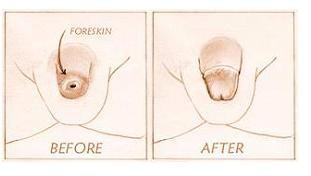Circumcision, the surgical removal of the foreskin from the penis, has been a topic of debate regarding its health benefits, particularly concerning hygiene and infection prevention. This article explores how circumcision can influence these aspects.
Hygiene
- Reduced Bacterial Growth: The foreskin can trap moisture and create an environment conducive to bacterial growth. Circumcision removes this area, potentially reducing the risk of bacterial infections.
- Easier Cleaning: Circumcision treatment individuals often find it easier to maintain genital hygiene. Without the foreskin, there is less complexity in cleaning, which can encourage better hygiene practices and reduce the accumulation of smegma (a combination of dead skin cells, oils, and bacteria).
- Odor Reduction: The presence of smegma can contribute to odor. Circumcision may help reduce this odor, promoting better overall hygiene.
Infection Prevention
- Decreased Risk of UTIs: Some studies suggest that circumcision can lower the risk of urinary tract infections (UTIs) in infants. This is particularly relevant in the first year of life when UTIs can lead to more severe complications.
- Lower Rates of STIs: Circumcision has been associated with a reduced risk of sexually transmitted infections (STIs), including HIV. Research indicates that circumcised men have lower rates of HIV transmission, possibly due to the decreased likelihood of micro-abrasions that can occur during sexual activity.
- Reduced Penile Cancer Risk: Although rare, penile cancer is more prevalent in uncircumcised men. Circumcision treatment may lower the risk by removing the foreskin, which can harbor cancer-causing agents, such as human papillomavirus (HPV).
- Lower Rates of Balanitis and Phimosis: Circumcision eliminates the risk of conditions like balanitis (inflammation of the glans) and phimosis (a condition where the foreskin cannot be retracted), both of which can lead to infections.
Considerations
While circumcision has hygiene and infection prevention benefits, it is essential to consider the following:
- Cultural and Personal Factors: The decision to circumcise is often influenced by cultural, religious, or personal beliefs. It’s important to respect individual choices and contexts.
- Surgical Risks: As with any surgical procedure, circumcision carries potential risks, including bleeding, infection, and complications from anesthesia. These factors should be weighed against the benefits.
- Education on Hygiene: Regardless of circumcision status, proper education on hygiene practices is crucial for everyone. Good hygiene can effectively prevent infections and promote overall health.
Conclusion
Circumcision treatment can have a positive impact on hygiene and infection prevention. While it may reduce the risk of certain infections and facilitate easier cleaning, personal choice, cultural considerations, and proper hygiene education remain paramount in making informed decisions about circumcision.





Comments